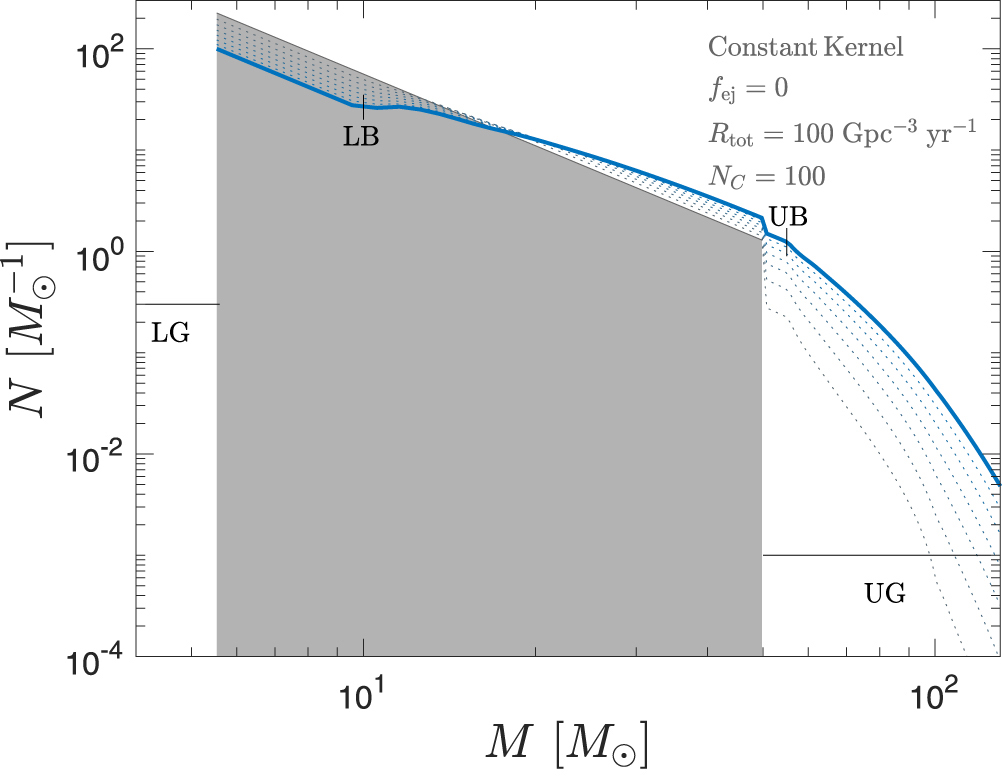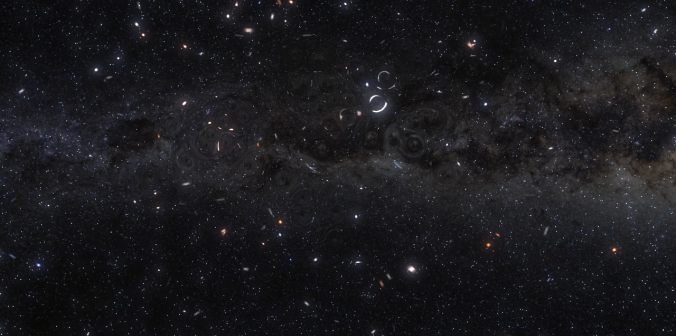What is the distribution of sizes of black holes in our universe? Can black holes of any mass exist, or are there gaps in their possible sizes? The shape of this black-hole mass function has been debated for decades — and the dawn of gravitational-wave astronomy has only spurred further questions.
Mind the Gaps
The starting point for the black-hole mass function lies in the initial mass function (IMF) for stellar black holes — the beginning size distribution of black holes after they are born from stars. Instead of allowing for the formation of stellar black holes of any mass, theoretical models propose two gaps in the black-hole IMF:
- An upper mass gap at 50–130 solar masses, due to the fact that stellar progenitors of black holes in this mass range are destroyed by pair-instability supernovae.
- A lower mass gap below 5 solar masses, which is argued to arise naturally from the mechanics of supernova explosions.

Missing black-hole (BH) formation channels due to the existence of the lower gap (LG) and the upper gap (UG) in the initial mass function. a) The number of BHs at all scales are lowered because no BH can merge with BHs in the LG to form a larger BH. b) The missing channel responsible for the break at 10 solar masses, resulting from the LG. c) The missing channel responsible for the break at 60 solar masses, due to the interaction between the LG and the UG. [Christian et al. 2018]
The Influence of Mergers
Based on recent events, the answer appears to be no! Since the first detections of gravitational waves in September 2015, we now know that black holes can merge to form bigger black holes. An initial distribution of black-hole masses must therefore evolve over time, as mergers cause the depletion of low-mass black holes and an increase in higher-mass black holes.
A team of scientists led by Pierre Christian, a graduate student at Harvard University, has now looked into characterizing this shift. In particular, Christian and collaborators explore how black-hole mergers in the centers of dense star clusters ultimately shape the black-hole mass function of the universe.
Black Holes Today
Christian and collaborators use analytical models of coagulation — mergers of particles to form larger particles — to estimate the impact of mergers in star clusters on resulting black-hole sizes. They find that, over an evolution of 10 billion years, mergers can appreciably fill in the upper mass gap of the black-hole IMF.

An example of the black-hole mass function that can result from evolving the initial mass function — complete with gaps — over time. Two breaks appear as a result of the initial gaps: one at ~10 (LB) and one at ~60 solar masses (UB). [Christian et al. 2018]
Lastly, the authors find that their models can only be consistent with observations if ejection is efficient — black holes must be regularly ousted from star clusters through interactions with other bodies or as a result of kicks when they merge. This idea is consistent with many recent studies supporting a large population of free-floating stellar-mass black holes.
Citation
Pierre Christian et al 2018 ApJL 858 L8. doi:10.3847/2041-8213/aabf88

